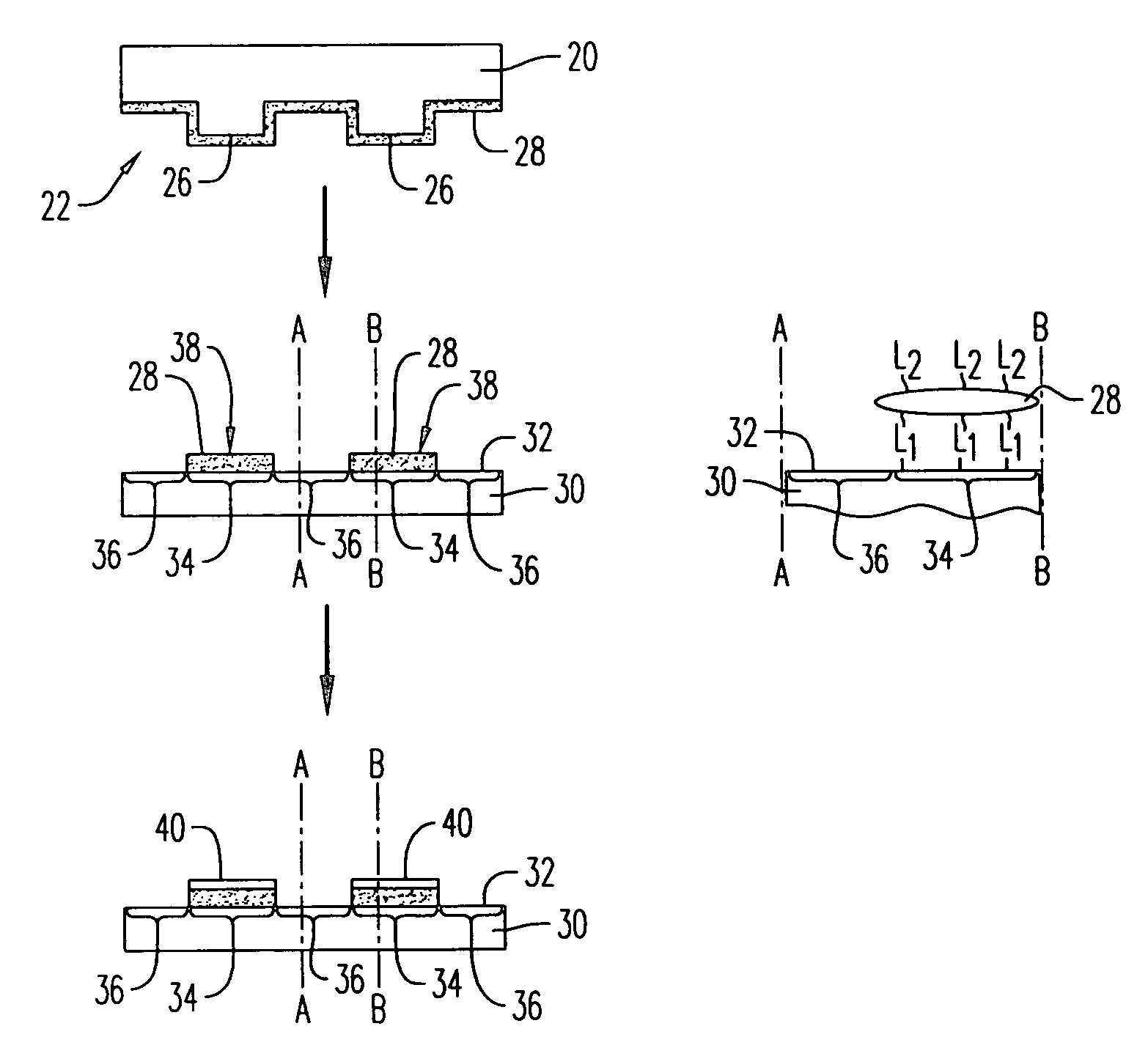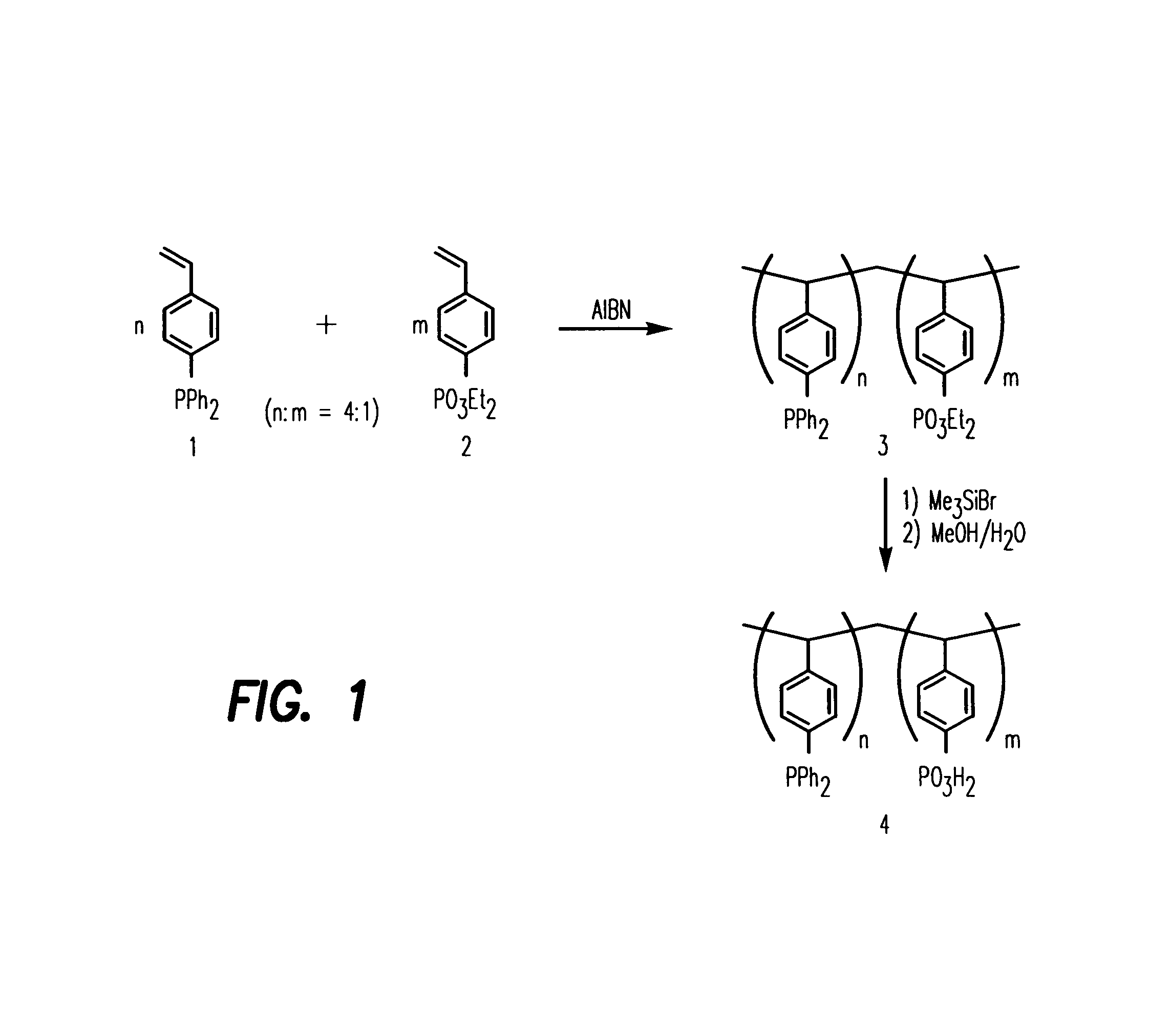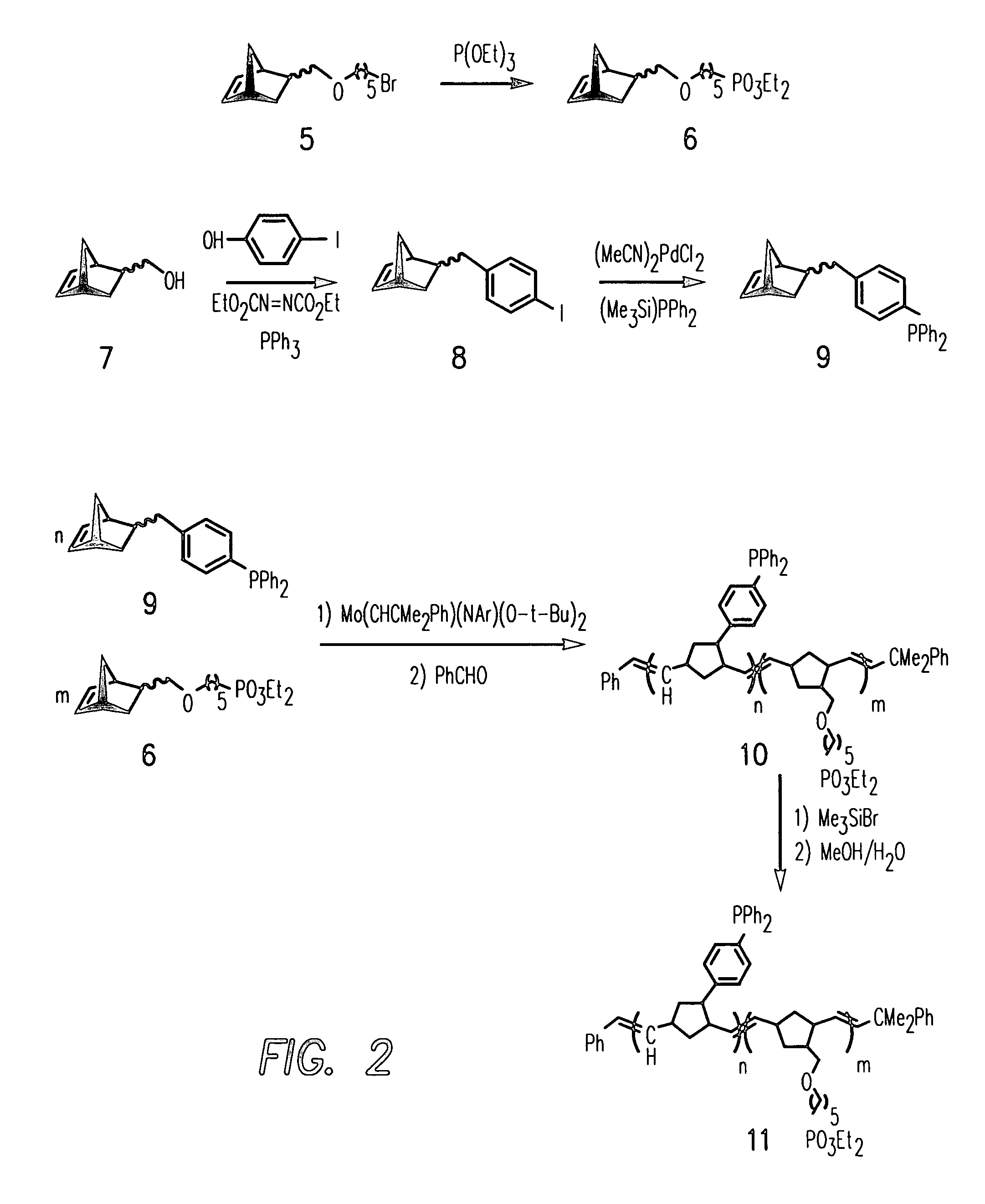Materials and methods for immobilization of catalysts on surfaces and for selective electroless metallization
a technology of electroless metallization and catalysts, which is applied in the direction of organic compounds/hydrides/coordination complexes, physical/chemical process catalysts, chemical coatings, etc., can solve the problems of increasing process cost, and affecting the recovery effect of catalysts from reaction products, etc., to achieve the effect of reducing the number of steps and reactions, and being convenient and fas
- Summary
- Abstract
- Description
- Claims
- Application Information
AI Technical Summary
Benefits of technology
Problems solved by technology
Method used
Image
Examples
example 1
[0142]Detailed Synthetic Procedure of Poly(4-vinylbenzenediphenylphosphine-co-diethyl 4-vinylbenzenephosphonate) 3
[0143]AIBN (20 mg) was added to a solution of diethyl 4-vinylbenzenephosphonate 1 (300 mg, 1.25 mmol) and 4-vinylbenzenediphenylphosphine 2 (1.44 g, 5 mmol) in 7 mL of methyl ethyl ketone containing 0.2 g of n-butanethiol. The resulting solution was refluxed for 3 h. After cooling to room temperature, the solvent was evaporated on a rotary evaporator. The oily residue was dissolved in 2 mL of dichloromethane and added dropwise to 100 mL of hexane with vigorous stirring. The precipitate (1.05 g) was filtered, washed thoroughly with hexane and dried in vacuum oven to give off-white powder. 1H NMR (250 MHz, 25° C., CDCl3): δ 7.50–7.17 (br, Ar—H), 6.45 (br, Ar—H), 4.02 (br, POCH2CH3), 1.29 (br, POCH2CH3), 1.22 (br, CH2).
example 2
[0144]Detailed Synthetic Procedure of Poly(4-vinylbenzenediphenylphosphine-co-4-vinylbenzenephosphonic acid) 4.
[0145]Copolymer 3 (0.8 g) was dissolved in 5 mL of anhydrous dichloromethane and treated with 0.5 mL of bromotrimethylsilane. The solution was stirred under nitrogen for 18 h, after which time the solvent was evaporated under reduced pressure. The oily residue was dissolved in 2 mL of anhydrous methanol and added dropwise to 50 mL of anhydrous diethyl ether. The white precipitate was filtered, washed with diethyl ether and dried in a vacuum oven at 50° C. overnight.
example 3
[0146]Detailed Synthetic Procedure of Diethyl [5-(bicyclo[2.2.1]hept-5-en-2-ylmethoxy)pentyl]phosphonate 6
[0147]5-[[(5-bromopentyl)oxy]methyl]bicyclo[2.2.1]hept-2-ene 5 (10 g) was added to 50 mL of triethylphosphite and the solution was heated at 160° C. under nitrogen for 20 h. The solution was cooled to room temperature and excess triethylphosphite was removed under reduced pressure. The oily residue was distilled in vacuo to give 6 as a colorless oil, b.p. 145° C., 0.15 Torr. 1H NMR (500 MHz, 25° C., CDCl3): δ (endo isomer, ˜85%) 6.07–6.05 (m, 1H, olefinic), 5.87–5.85 (m, 1H, olefinic), 4.06–4.00 (m, 4H, POCH2CH3), 3.34–2.94 (m, 6H, CH2), 2.84 (br s, 1H, bridgehead CH), 2.73 (br s, 1H, bridgehead CH), 2.30–2.20 (m, 1H, exo CH), 1.70–1.49 (m, 9H, CH2), 1.27 (t, 6H, POCH2CH3), 0.44–0.41 (m, 1H, endo CH of CH2); (exo isomer, partial) 6.02–6.01 (m, 1H, olefinic), 2.70 (br s, 1H, bridgehead CH). 13C {1H} NMR (125 MHz, 25° C., CDCl3):□ (endo isomer) 137.0 (olefinic CH), 132.5 (olefinic...
PUM
| Property | Measurement | Unit |
|---|---|---|
| thickness | aaaaa | aaaaa |
| thickness | aaaaa | aaaaa |
| temperature | aaaaa | aaaaa |
Abstract
Description
Claims
Application Information
 Login to View More
Login to View More - R&D
- Intellectual Property
- Life Sciences
- Materials
- Tech Scout
- Unparalleled Data Quality
- Higher Quality Content
- 60% Fewer Hallucinations
Browse by: Latest US Patents, China's latest patents, Technical Efficacy Thesaurus, Application Domain, Technology Topic, Popular Technical Reports.
© 2025 PatSnap. All rights reserved.Legal|Privacy policy|Modern Slavery Act Transparency Statement|Sitemap|About US| Contact US: help@patsnap.com



